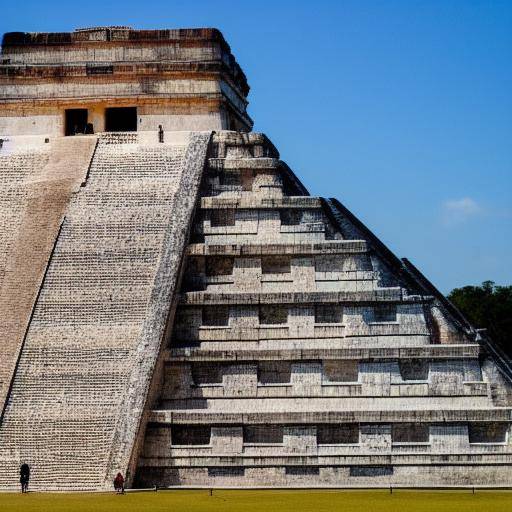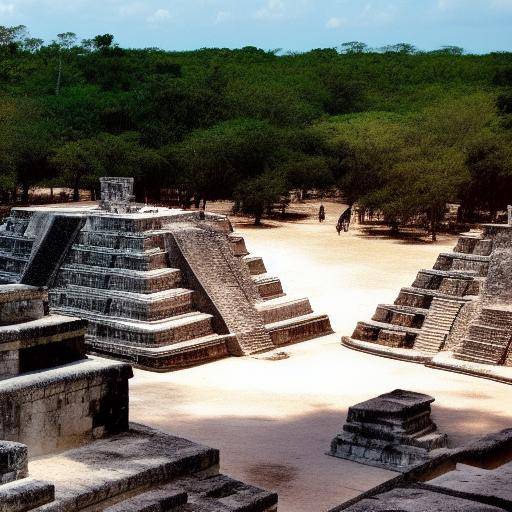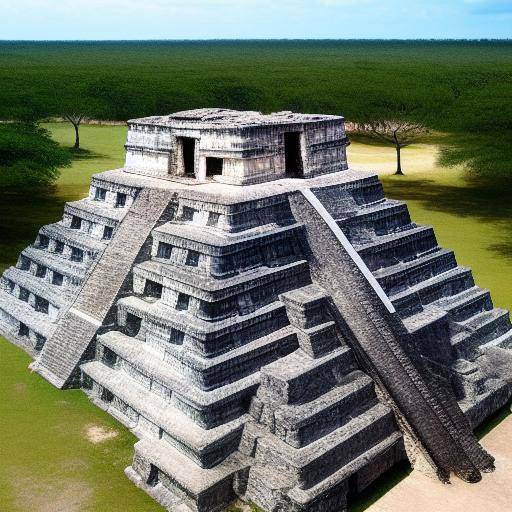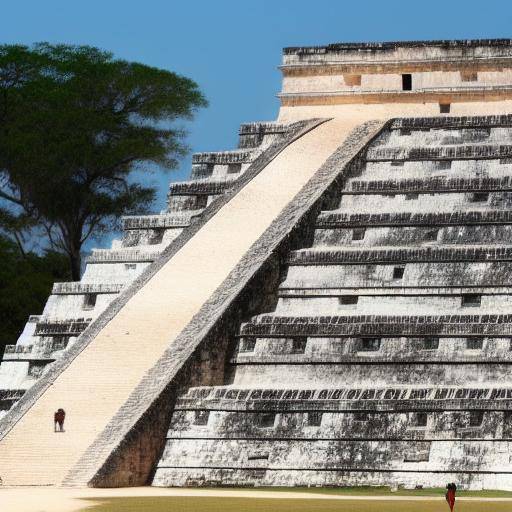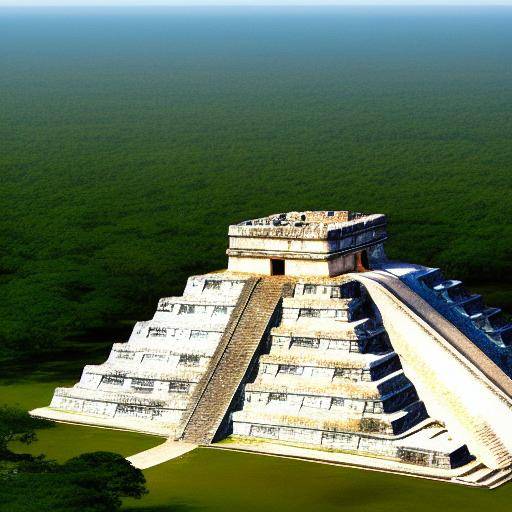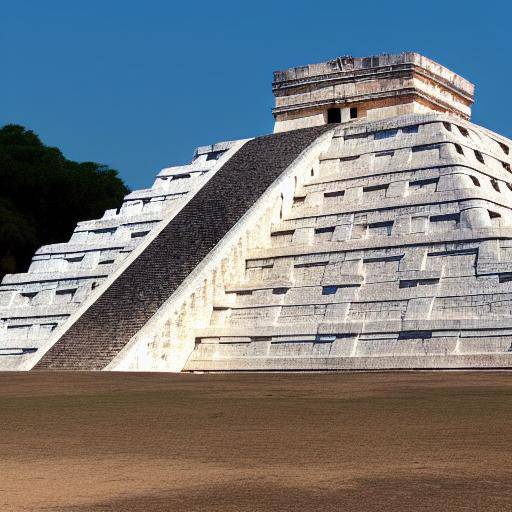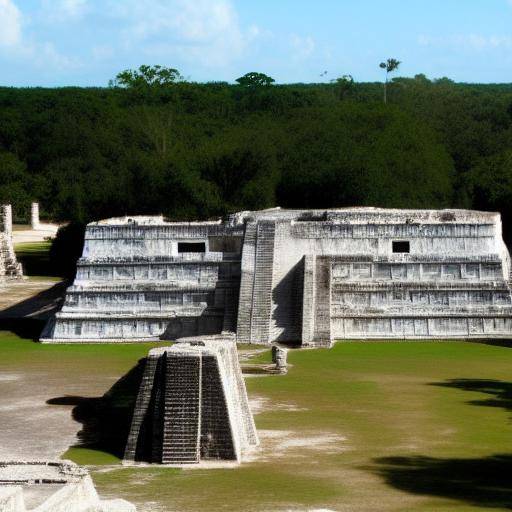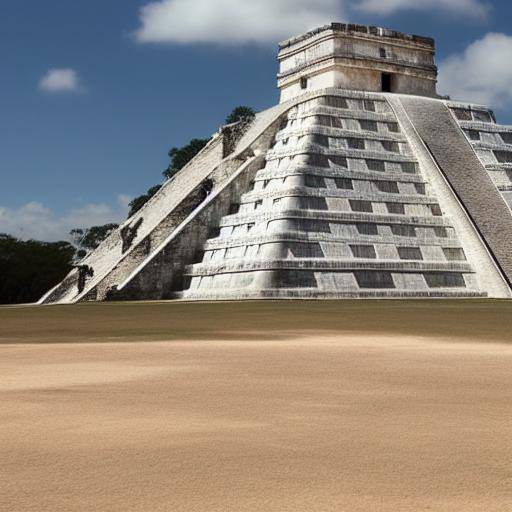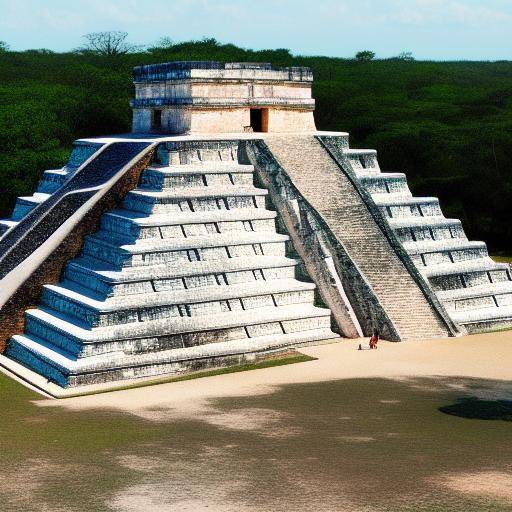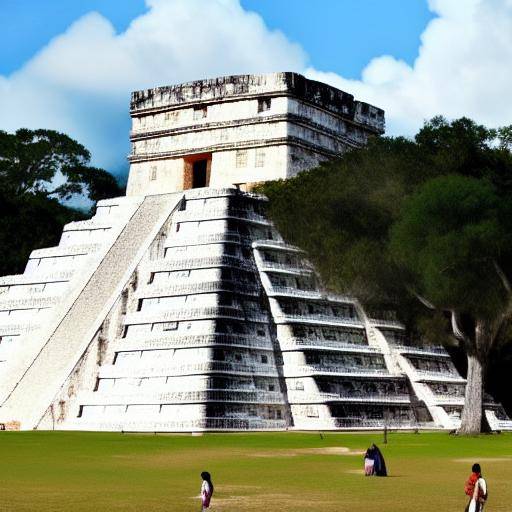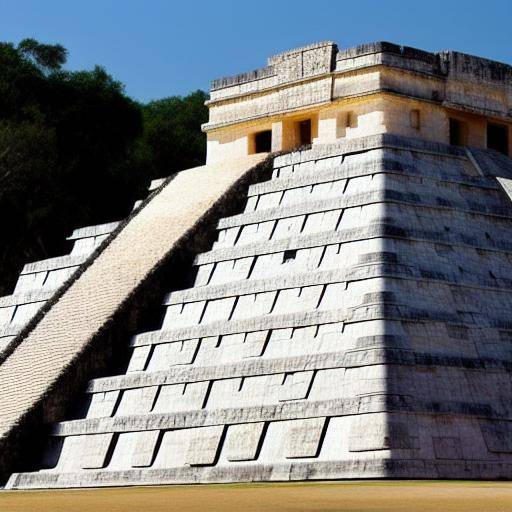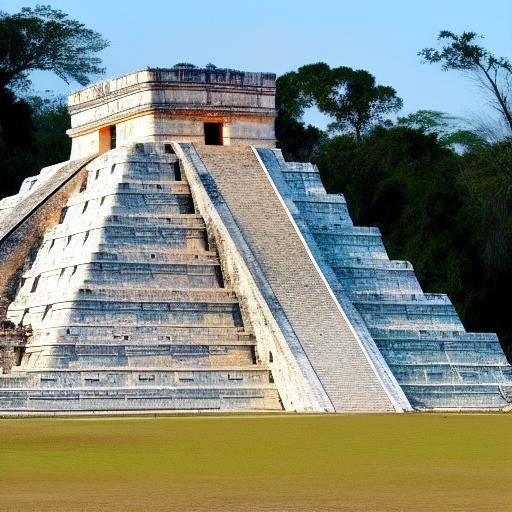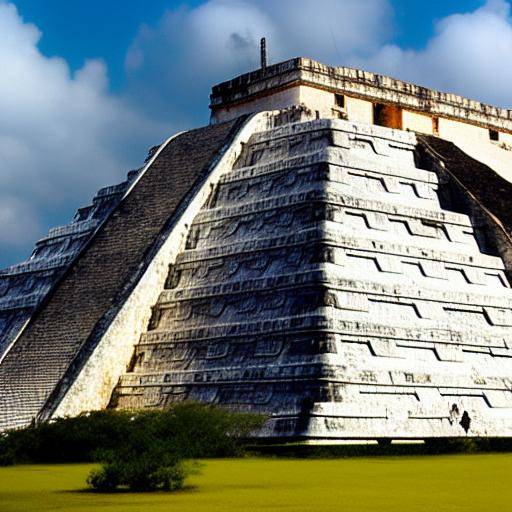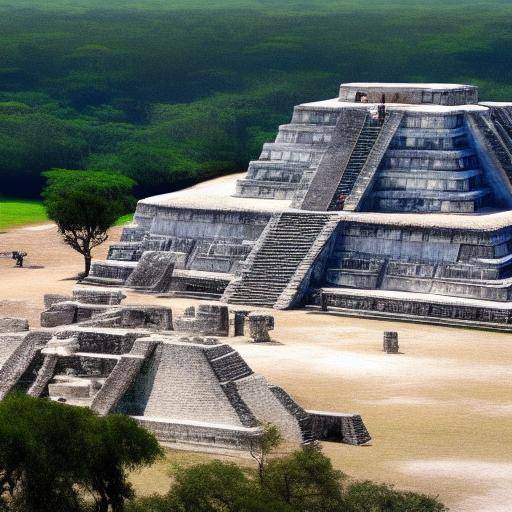
Welcome to the majestic exploration of Chichén Itzá, an archaeological site that encapsulates the rich legacy of Mayan civilization in the region of Yucatan, Mexico. Discover with us the history, grandeur and mysteries of the Mayan ruins that endure as a testament to an extraordinary civilization.
Introduction
Chichen Itzá's mysticism captivates travelers and archaeologists alike. This emblematic site reveals a past full of riddles and splendor, offering a unique window to the world of the ancient Mayas and their influence in the region. In this article, we will explore the history, meaning and timeless beauty of these Mayan ruins, as we immerse ourselves in the incomparable legacy of Mexico. Prepare to embark on a fascinating journey through time and culture.
History and Background
The ruins of Chichen Itzá, designated as a World Heritage Site by UNESCO, are an impressive testimony of the greatness and sophistication of Mayan civilization. Established between the VI and X AD, this settlement flourished as a political, religious and commercial centre on the Yucatan peninsula. The monumental architecture, the imposing temples and the astronomical observatories highlight the technical skill and scientific knowledge of the Mayas.
During this period, Chichén Itzá became an epicenter of cultural exchange, where both Mayan and other Mesoamerican cultures converged. The fusion of architectural styles and traditions is evident in the monuments that decorate this site, such as the Pyramid of Kukulcan, the Temple of Warriors and the Sacred Cenote, all of them silent witnesses of the spiritual wealth and artistic mastery of the ancient inhabitants.
The arrival of the Spaniards to America marked the decline of Chichén Itzá, which was eventually abandoned and covered by the jungle. However, through archaeological work and meticulous preservation, we have managed to decipher and appreciate the incomparable grandeur of this ancestral legacy, which continues to amaze the modern world.
Detailed Analysis
By exploring Chichen Itza, we not only glimpse the physical vestiges of an advanced civilization, but also witness the deep astronomical, mathematical and religious knowledge that influenced the structure and meaning of these buildings. The precise layout of the buildings, aligned with key astronomical events, reflects the intimate connection of the Mayas with the cosmos and their efforts to understand and honor the universe around them.
Religious practices and rituals associated with Chichen Itzá, such as the famous ball game, provide an intriguing view of the spirituality and beliefs underlying Mayan society. In addition, the discovery of mural paintings, engraved in mats and figures in relief penetrates the symbolic and mythological world that permeated the daily life of this culture.
In addition, the social and political structure of Chichen Itzá, with its ruling elites and governance systems, raises fascinating questions about the power, authority and community organization that defined the internal dynamics of Mayan civilization.
Comprehensive review
The Mayan ruins of Chichén Itzá attest to the architectural skill and technical skill of the builders, as well as their deep understanding of principles such as acoustics and optics, reflected in the meticulous execution of the buildings and their visual and sound effects. This detailed analysis sheds light on the innovative engineering that lasts until today as a legacy of the incredible Mayan minds.
The continued conservation and restoration of Chichen Itzá, together with the efforts to understand its full meaning, provide an invaluable platform for archaeological research and cultural enjoyment. This historic site acts as a tangible link to the identity and heritage of the region, offering visitors and experts the opportunity to immerse themselves in the past and connect with an incomparable civilization.
Comparative analysis
By comparing Chichén Itzá with other Mayan ruins in Yucatan, such as Tulum or Cobá, distinctive differences emerge in terms of architecture, purpose and historical context. While Tulum stands out for its coastal location and function as a shopping mall, Chichen Itzá is distinguished by its magnificence and role as a religious and political epicenter. For its part, Cobá offers a unique perspective on trade routes and the network of roads connecting the ancient Mayan cities.
The wealth and diversity of the Mayan ruins in Yucatan invite us to appreciate the complexity and sophistication of a civilization that transcended temporal and geographical borders, opening windows to the evolutionary and adaptive processes that shaped the cultural landscape of the region.
Practical Tips and Accessible Recommendations
If you plan to visit Chichén Itzá, we recommend you to get into this journey with an open mind and a curious spirit. Some practical tips include the use of sunscreen, comfortable footwear and preparation for the warm and humid climate of the region. Also, having access to historical and cultural information before the visit will enrich your experience by exploring the ruins.
It is essential to respect and preserve this cultural heritage, avoiding touching or damaging the structures and observing local regulations. In addition, supporting local communities and preservation initiatives will contribute to the long-term conservation of this invaluable legacy.
Sector Reflections and Expert Reviews
Within the archaeological community, there is a general consensus on the importance of preserving and comprehensively studying the remains of Chichen Itza to better understand Mayan civilization and its impact on world history. Experts highlight the need for sustainable policies that balance conservation with public access, as well as the promotion of education and awareness of the importance of these sites.
Cultural leaders and indigenous voices also emphasize the importance of respecting the traditions and the cosmovision of local communities related to these sites, consolidating a holistic and respectful approach to cultural heritage.
Case Studies and Practical Applications
By observing the cultural and tourist influence of Chichen Itzá in the Yucatan region, we can appreciate how this iconic site has led to economic and social development through sustainable tourism and the preservation of heritage. Studies that address visitor management, environmental conservation and community participation offer valuable lessons for other cultural destinations around the world.
In addition, the incorporation of the Mayan narrative in the promotion and dissemination of Chichen Itzá provides an inspiring example of how local communities can play an active role in the preservation and promotion of their cultural heritage.
Future Trends and Predictions
As cultural tourism and interest in Mayan legacy continue to expand, opportunities for international collaboration in research, conservation and dissemination of these archaeological treasures are likely to arise. The integration of innovative technologies, such as increased reality and digital conservation, will open up new ways to engage global audiences and preserve the sites dynamically.
The growing awareness of the importance of preserving cultural heritage and indigenous diversity will also promote the development of inclusive and sustainable approaches for the management of Chichén Itzá and other Mayan ruins, ensuring their continued relevance for future generations.
Conclusions and FAQs
In short, Chichén Itzá represents much more than a set of ancestral ruins; it is a lasting symbol of the creativity, wisdom and resilience of Mayan civilization. By exploring these ruins, we immerse ourselves in a world of unrivalled splendour and complexity, expanding our perspectives and nurturing our appreciation for Mexico's cultural wealth.
Frequently asked questions
What is the best time to visit Chichen Itzá?
The spring equinox is a particularly popular moment, as the sunlight creates the effect of an ascending serpent in the Kukulcan Pyramid. However, keep in mind that the site may be more crowded at this time.
How do I get to Chichén Itzá from Cancun or Playa del Carmen?
You can take an organized tour, rent a car or use public transport to get to Chichen Itza from these tourist destinations. It is recommended to plan your trip in advance to ensure a smooth visit.
What traditional Yucatan foods can I try during my visit to Chichen Itza?
Some delicious examples include chochinita pibil, lime soup, papadzules and panuchos. Exploring local cuisine will add a unique culinary dimension to your experience in the region.
What are the conservation measures in force in Chichen Itzá?
Measures have been implemented to limit direct interaction with structures and protect the surrounding natural environment. In addition, respect for the regulations and guidelines provided by the site guides is encouraged.
Are there guided tours that provide detailed information about ruins and their meaning?
Yes, there are numerous guided tours available that offer a deep understanding of the history, architecture and cultural aspects of Chichen Itzá. Find options that suit your specific interests and needs.
What is the cultural importance of Chichen Itzá for local communities?
Chichén Itzá remains a significant focal point for local Mayan communities, both in terms of cultural identity and economic opportunities. The active participation of communities in the management and promotion of this legacy is essential for their long-term preservation.
Conclusion
Ultimately, Chichén Itzá represents a living legacy that enriches our understanding of the past and links the wonders of ancient Mayan civilization with the present. By exploring these Mayan ruins and the ancestral legacy of Mexico, we immerse ourselves in a journey of discovery and appreciation for human grandeur and creativity. May this experience last as an eternal tribute to the persistence and ingenuity of a culture lost in time.

